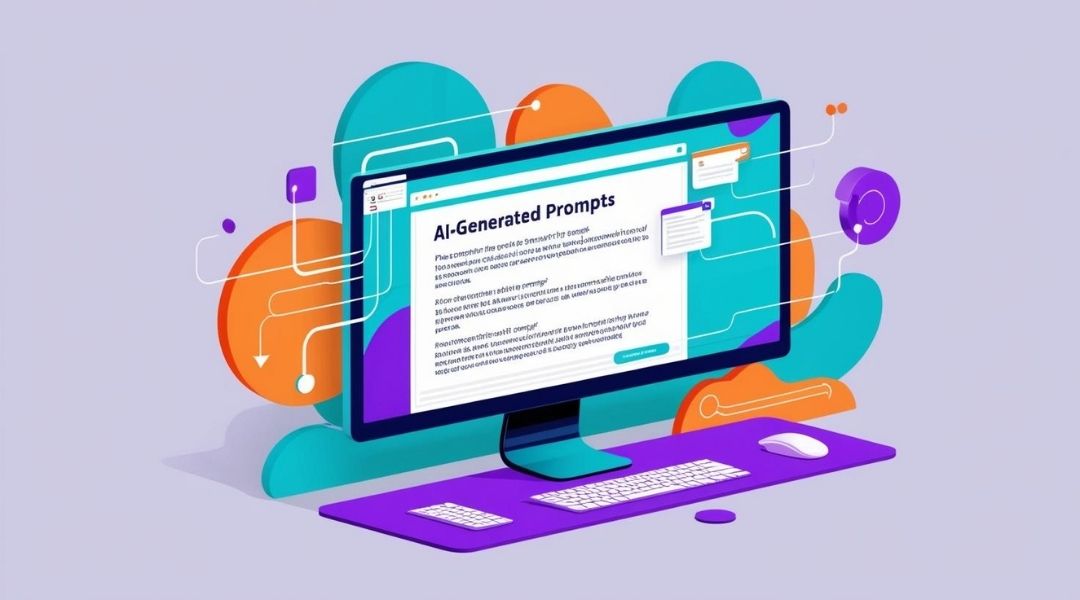Strong SEO prompts for ChatGPT help creators produce marketing deliverables that match precise objectives. Some professionals rely on 18 distinct instructions for projects like 150-word LinkedIn posts or three-part welcome emails. This plan is easy to change later, it’s really clear, uses the right words, and speaks directly to the people we want to reach.
Do you want more people to see all you have to offer? Nail those prompts, and back up your claims with numbers. Need a snappy ad? A thorough article summary? Every request starts the process of getting you well-written content. Instructions are next. Make them crystal clear.
Craft Clear and Specific Instructions
Your instructions must specify the exact format, length, and style you desire. This clarity influences how ChatGPT structures responses, whether you seek a 150-word LinkedIn post with four insights or a three-part email sequence with distinct highlights. Provide details about your brand or audience, then outline your goals, such as driving discussion or boosting conversions.
After that, you’ll want to request a second draft if needed so that ChatGPT can refine each output. Then, define the tone by stating that you want a balanced voice that sounds approachable yet professional and indicate any list formats or calls to action.
Ask for variable sentence lengths to keep readers engaged. Insert instructions like word counts or specific prompts to maintain consistency. This level of detail supports reliable strategies.
Focus on Target Keywords Strategically
- Pinpoint Priority Phrases: You can examine existing product descriptions to find relevant keywords faster. Aim for five SEO terms that capture the product’s qualities. Free AI product description generators serve as a source of inspiration. You then compile a final, concise list for consistently very clear targeting.
- Highlight Popular Questions: Questions often reveal hidden desires and drive deeper user interest. You might ask for five inquiries related to a chosen keyword. This helps you shape more relevant prompts for strong engagement. Consider how each question truly highlights user goals before crafting final prompts.
- Organize Search Intent: Assess each keyword’s intent as commercial, transactional, or possibly informational. You can place them in a table for easier analysis later. This step refines your approach and simplifies future content suggestions. Categorizing keywords carefully guides your final outline and ensures targeted blog titles.
Incorporate Action-Oriented Language Effectively
You’ll influence how ChatGPT responds by using concise, direct phrasing like “Create,” “Generate,” or “List.” This approach makes your requests more persuasive, which boosts engagement. Fact: OpenAI’s GPT models can handle thousands of tokens, so shorter, clear prompts yield faster, more accurate results. Using action words encourages ChatGPT to produce tangible outputs, such as outlines or code snippets.
You can request a specific format that includes a table of ideas or a bullet-point list. Never bury your request under fluff. Strong directives lead to sharper responses.
For instance, say “Produce a 100-word summary” or “Suggest 10 catchy titles.” Action-oriented language increases your control when shaping content for blog posts, social media updates, or technical tasks. It sets a clear path for ChatGPT to follow. You drive efficiency with direct instructions.
Optimize for Search Intent Every Time
- Identify user goals: You want to match each prompt with your reader’s actual query. Research keywords and see if they align with buyer needs. According to one survey, 58% use ChatGPT for content creation. That suggests your content must deliver value that matches search expectations.
- Analyze competitor content: Examine top articles for your target term and note recurring questions. Use that insight to position your prompt for precise answers. Ask ChatGPT to simplify data such as user questions and trending subtopics. This helps you stand apart by addressing core needs.
- Refine your final script: Check your draft for alignment with each exact phrase you discovered. Remove fluff and keep your content focused on user queries. Maintain a clear path from question to answer across every paragraph you write. That ensures higher engagement, boosted traffic, and stronger search performance.
Avoid Overly Broad or Vague Phrasing
Avoiding broad or fuzzy language helps ChatGPT deliver direct answers. For example, specify a product name, main features, and desired tone in your request. That guidance produces relevant content for your marketing goals.
Broad words lead to scattered results, so share details about length, style, or topic focus. If you need a short product description or a paragraph for a blog, say so. That small step enhances clarity.
You can add instructions to exclude certain points or prioritize key elements. Clear direction narrows ChatGPT’s options and raises your chance of success. Experimentation with varied prompts also refines what you receive.
Each time you refine your phrasing, ChatGPT learns your goals. That helps produce accurate, timely, and effective outcomes that match your objectives. Detail your audience clearly to guide better results.
Structure Prompts with Concise Clarity
You gain precision when you structure your prompts intentionally and keep words minimal. Concise strategy reduces confusion, boosting engagement.
- Outline Approach: You streamline requests by dividing them into sections with targets. This method cuts down on details in each section. You also clarify your focus and generate direct answers. A set of 100 concise prompts can nurture thinking.
- Logical Flow: You arrange ideas sequentially to avoid confusion. This structure simplifies your main argument while saving time for your audience. Shorter segments help you pinpoint essential elements. They also keep readers interested and ensure stronger comprehension.
- Intent Alignment: You ensure every prompt addresses a clear goal for better results. That approach removes fluff and builds targeted answers. It supports your SEO by highlighting key facets quickly. Such precision can improve your article’s impact and keep readers engaged.
By combining structure, clarity, and intent, your prompts become powerful tools for generating focused, high-impact content. The more intentional your approach, the more efficiently you can guide AI toward producing results that resonate with both readers and search engines alike.
Tailor Content Requests to Your Audience
Consider your readers’ needs. You shape every SEO request so it matches their knowledge level. Beginners thrive on simpler tasks.
Try prompts for website SEO analysis or schema markup guidance. Advanced users crave bigger topics, including competitor research or backlink analysis. You craft specialized instructions by specifying the user group.
Try “Act like a technical SEO expert” for detailed schema troubleshooting. Incorporate actionable data, like known keyword volumes or search difficulty metrics, for more depth. You can rely on layered prompt chaining to keep context consistent across sections.
This modular approach ensures each segment stays relevant. You can also define persona roles or use constraints on style to enhance clarity. By shaping your prompts, you engage your audience’s interests and significantly boost SEO outcomes.
This tactic drives better overall performance.
Refine Outputs Through Iterative Adjustments
You can refine ChatGPT outputs by really applying small, repeated tweaks. Ongoing analysis consistently helps you teach the model better each time.
- Observe Early Results: Check the model’s initial response for missing details. Note any vague statements that require further explanation. Spot references to big topics, including Tesla Motors. Identify broad statements that can be narrowed further.
- Adjust Prompt Details: Small changes help ChatGPT produce more direct answers. Add context by specifying details like vehicle technology. Ask for coverage on topics like renewable energy. Request numbers and examples to strengthen each explanation.
- Review Outcomes Repeatedly: Analyze ChatGPT’s reply to see what fits well. Compare the response to your original request details. Watch key facts on employment or economic gains. Refine prompts again until your depth is reached.
With consistent refinement and thoughtful prompt engineering, you can shape ChatGPT into a powerful tool that delivers precise, insightful content. The more you iterate, the more aligned and effective your results become, turning every prompt into a learning opportunity for smarter outputs.
Leverage Tone and Style Descriptions
You strengthen your prompts by detailing the exact tone and style you seek. This clarity helps ChatGPT align with your voice, whether it’s friendly, authoritative, or conversational. You guide the language, pacing, and formality so the generated content stays consistent.
If you prefer a laid back approach, specify that. If you want a confident edge, indicate that as well. These hints shape outputs that reflect your brand and personal flair.
Always confirm any stats or quotes from AI before finalizing your piece. Maintain control of your unique perspective and revise AI outputs for better alignment. You may ask for rewording tips or keyword checks to enhance readability.
Iteration refines the final piece until it matches your preferred style. You ensure clarity by specifying exact formality, emotion, or your desired cadence. Craft your prompts with a genuine voice. Keep them organized, with a distinct focus; don’t forget to provide context, but stay concise.
Use synonyms and incorporate well-phrased keywords. Then refine, test, and track results. SEO demands attention to clarity, plus a few targeted terms.
You might emphasize user intent. Try to infuse variety in sentence length. Create a structure that welcomes scanning and quick reading.
Brevity can spark user clicks. This approach supports practical outcomes for any ChatGPT session. Small tweaks can lead to improvements, so stay curious and keep testing in real scenarios.









